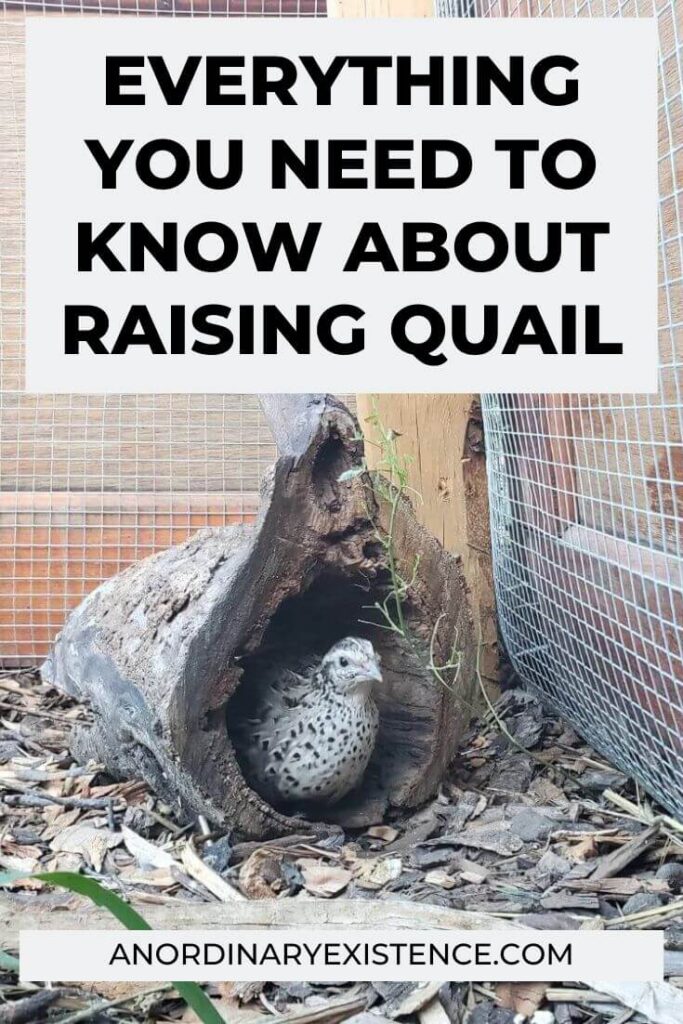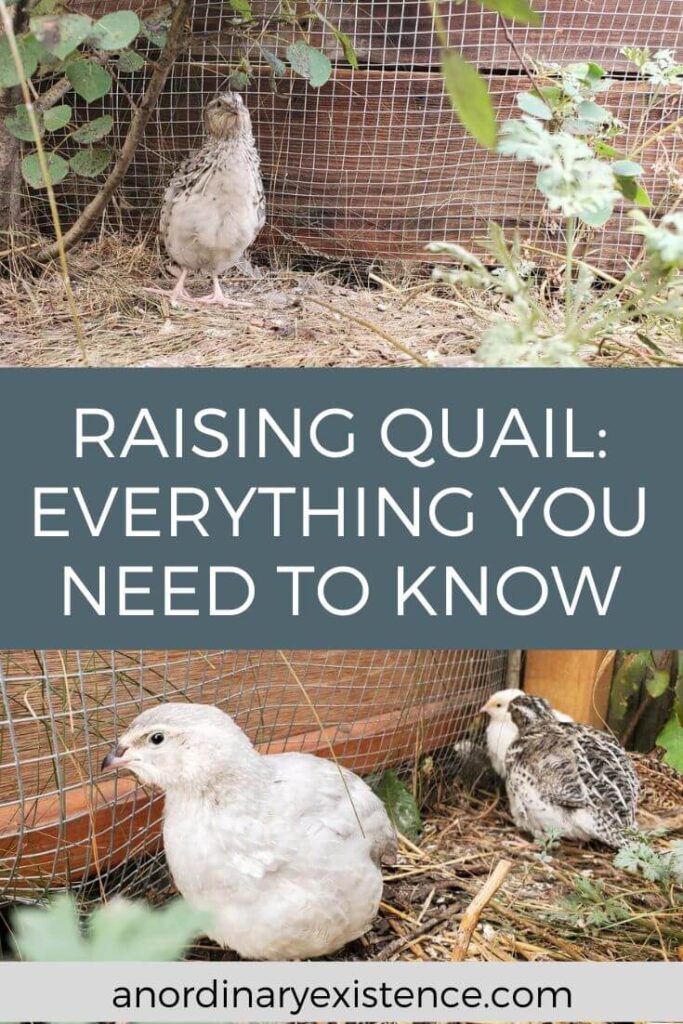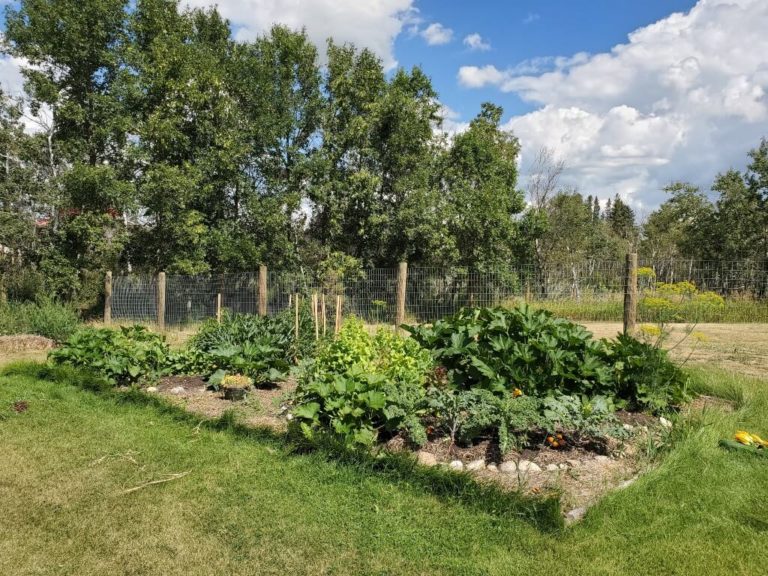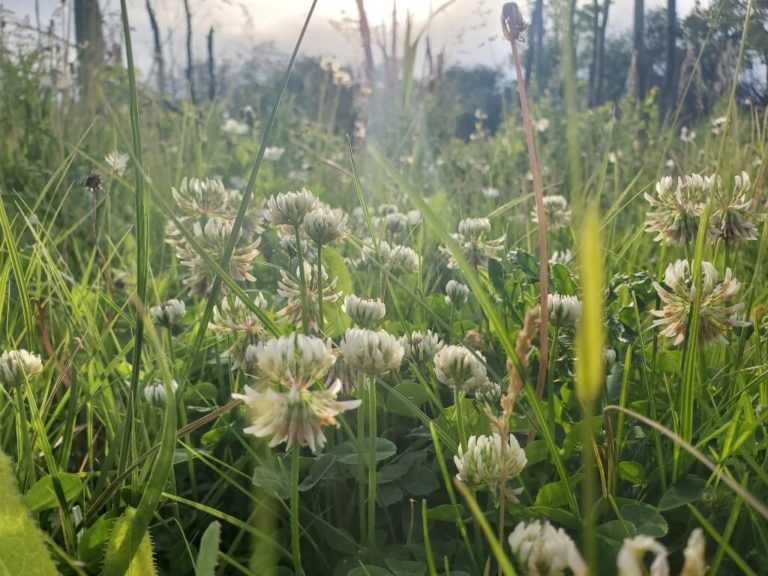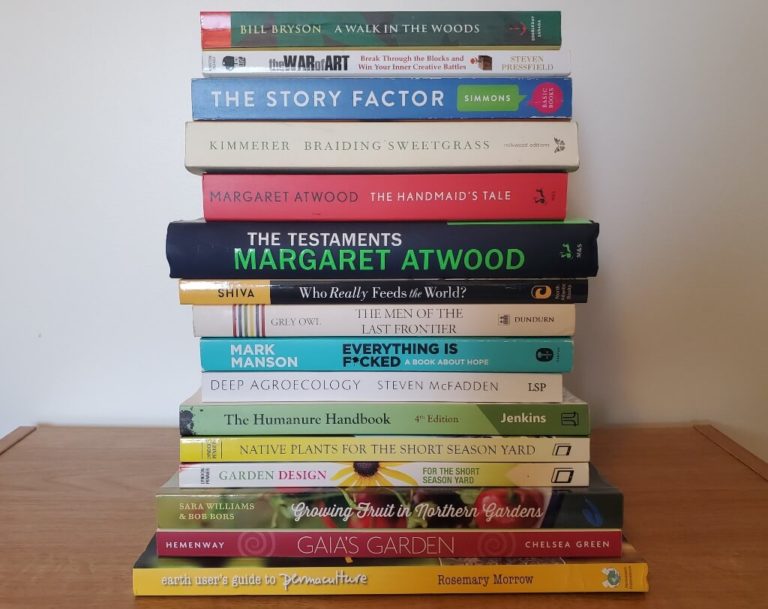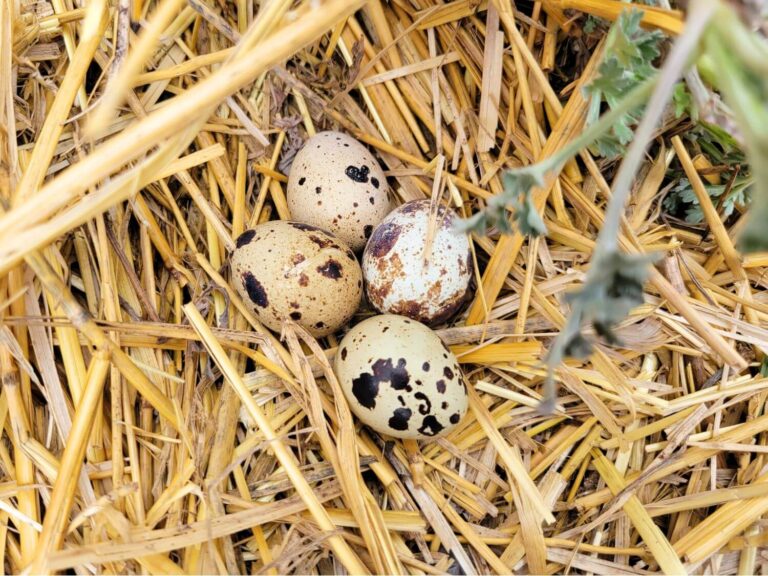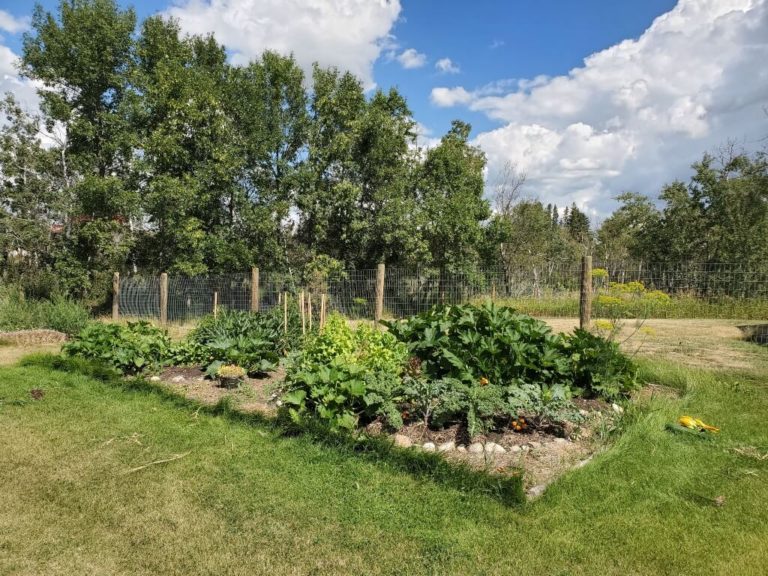EVERYTHING YOU NEED TO KNOW ABOUT RAISING QUAIL
This post may include affiliate links. As an Amazon Associate I earn from qualifying purchases. Find more info in my privacy policy.
Quail are a small bird which are becoming more and more popular as an option for a backyard flock.
They produce delicious and nutritious eggs as well as tasty meat. Their small size, quiet nature, and adaptability makes them ideal for almost any environment.
If you’re considering raising birds in your backyard, on your homestead, or even on your patio, quail may just be the right option for you!
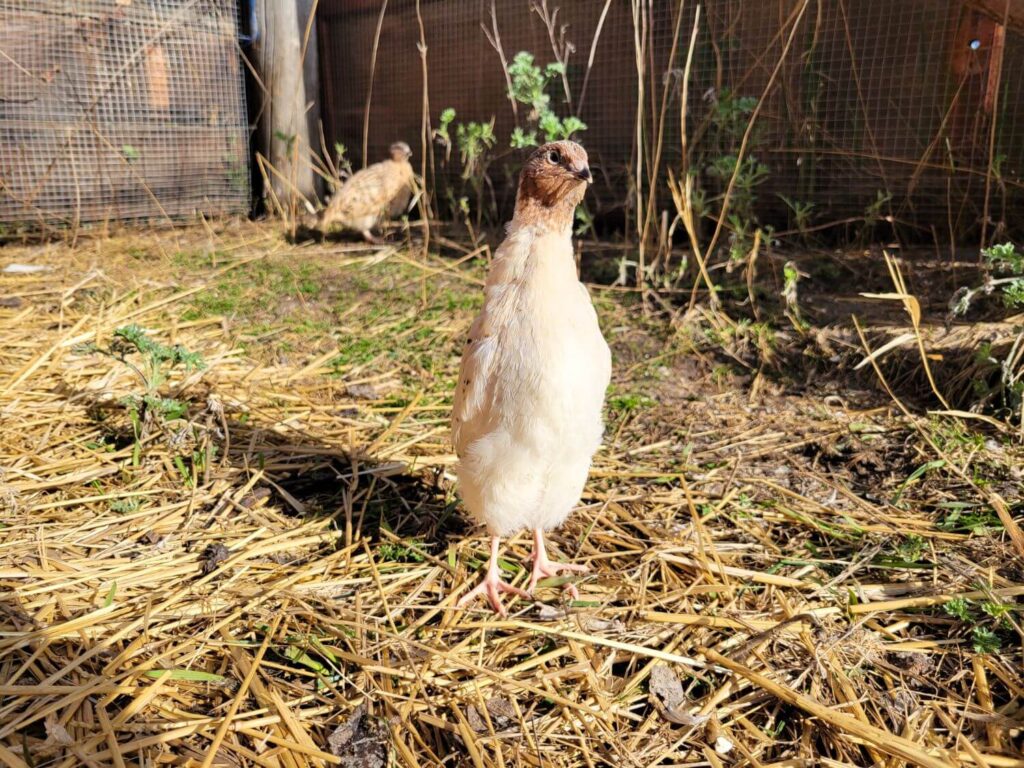
WHAT ARE QUAIL?
Quail are split into Old World Quail (Phasianidae family) and New World Quail (Odontophoridae family). Old and New World Quail are only distantly related but share many similar characteristics and habits.
The 100+ species of quail throughout the world have varying colour patterns and diverse natural habitats. However, in general, quail are ground-dwelling, live in flocks (also known as coveys), prefer habitats with dense cover, and grow to be about 15-20cm/6-8 inches and weigh about 100-170g/3.5-6oz.
Historically, quail have been a popular game bird option for hunters tracing back to ancient civilizations. Today, quail are becoming more and more popular for homesteaders, farmers, or those just looking to raise a few backyard birds.
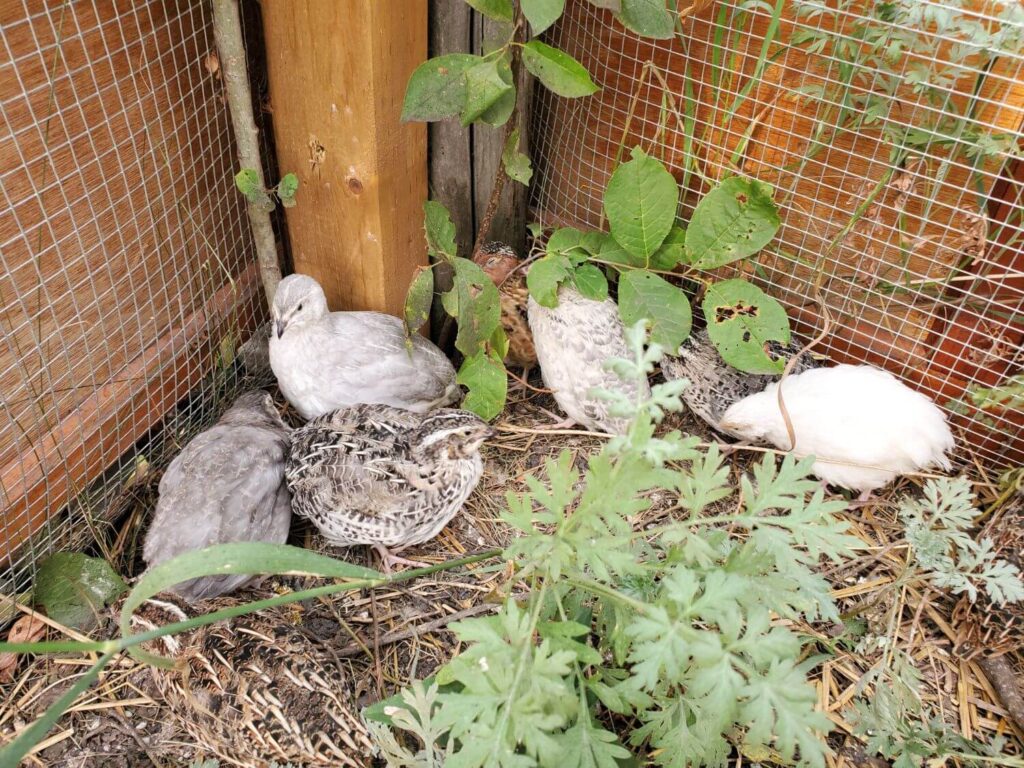
In North America, the most common breeds of quail you will come across include Coturnix quail, California quail, and Bobwhite quail.
Bobwhite and California quail are both New World Quail that have mostly retained their natural, wild behaviours. They are popular with hunters and are often raised for game farms and hunting dog training purposes. They can also be raised for meat and eggs.
Coturnix quail are Old World Quail and are by far the most popular option for backyard birds as they are slightly more domesticated. It’s relatively easy to find Coturnix hatching eggs or birds to start a flock.
My personal experience is with Coturnix quail raised for eggs, meat, and bird dog training.
The information you’ll find here is applicable to Coturnix quail, though all quail will have the same basic requirements, regardless of species.
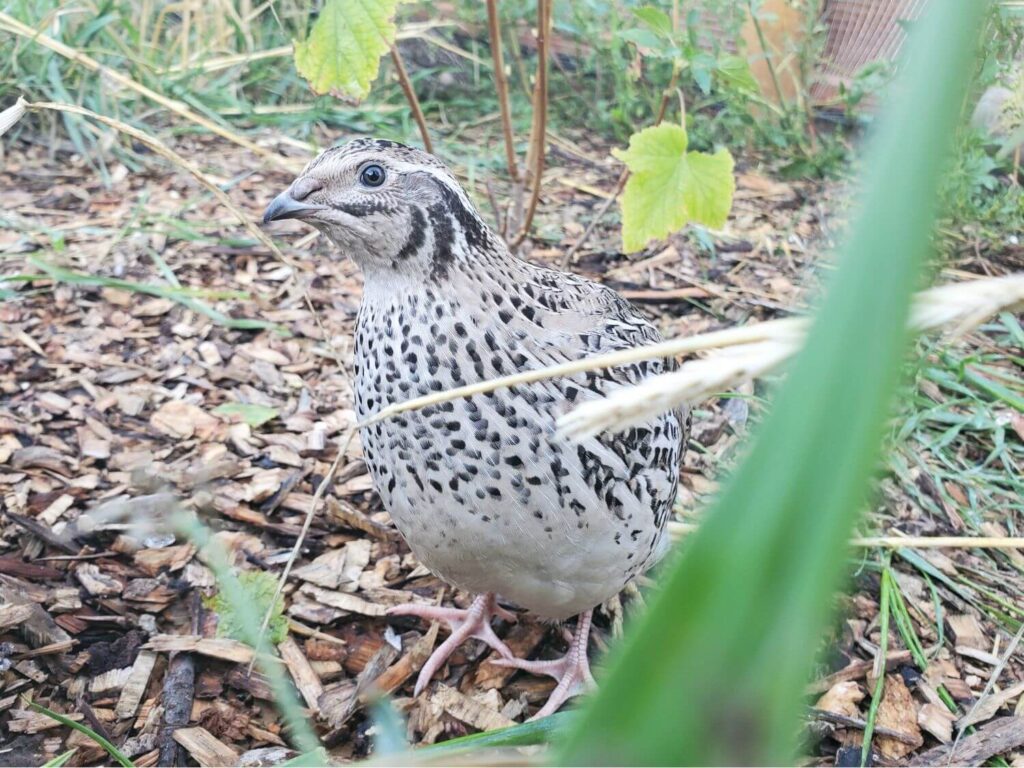
WHY YOU SHOULD RAISE QUAIL
There are many reasons why quail make a great option.
QUAIL MAKE DELICIOUS AND NUTRITIOUS EGGS
In a time when everyone seems to be looking for greater self-sufficiency, raising quail is an excellent option for an additional protein source – both through eggs and meat.
Quail eggs are more nutritionally dense than chicken eggs, come in unique patterns and colours, and are delicious!
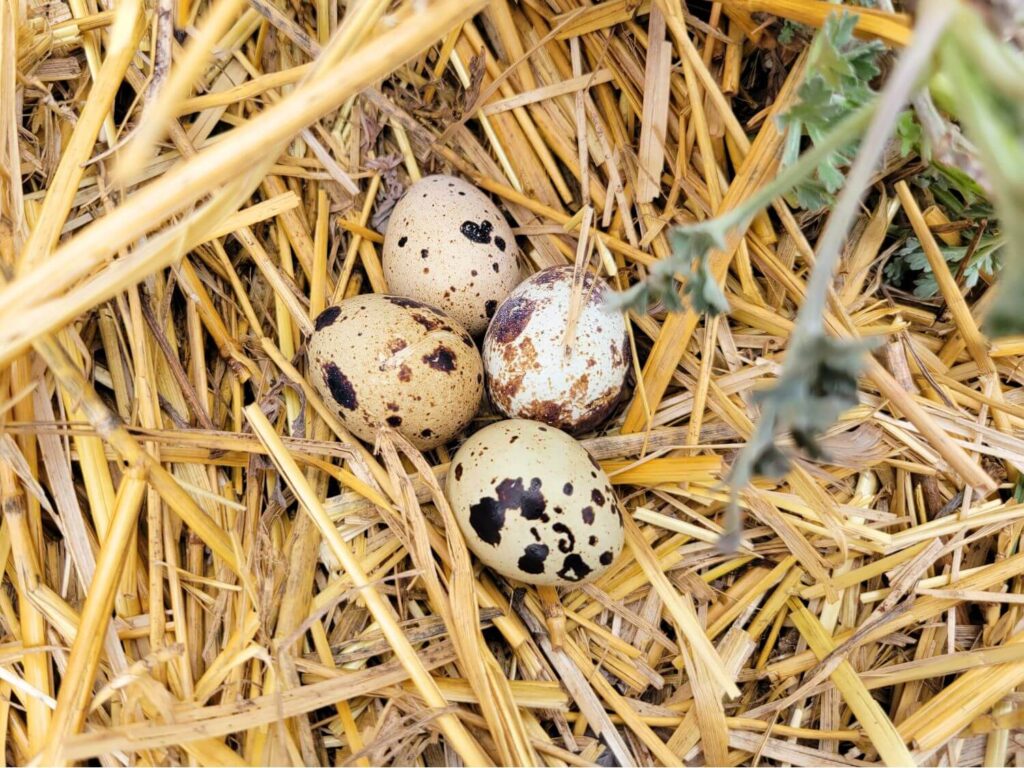
They are smaller, so you’ll need about 3 quail eggs to = 1 chicken egg, but in my opinion, they have a nicer egg-to-white ratio and taste better.
We love them fried, boiled, deviled, scrambled, and pickled.
Quail will start laying eggs around 6-8 weeks of age and will lay about an egg per day, depending on age, health, time of year, and environment.
READ MORE: RAISING QUAIL FOR EGGS
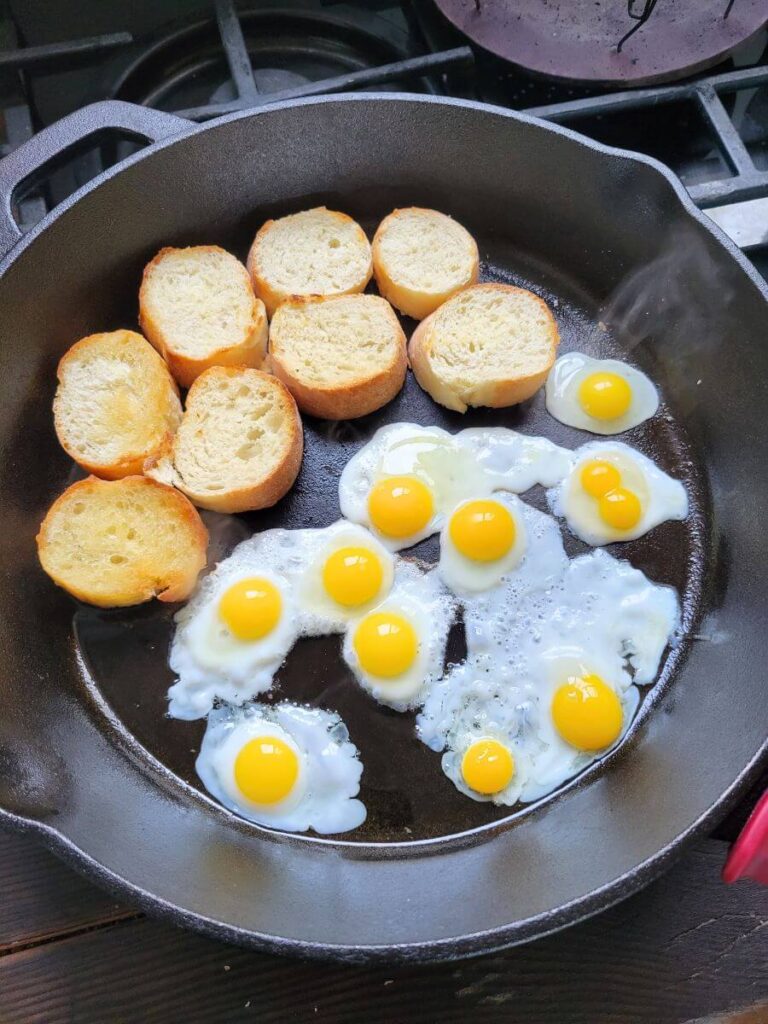
QUAIL ARE EXCELLENT MEAT BIRDS
Their small size may have you wondering if quail are worth raising for meat, but they actually make great meat birds.
Quail grow quickly and are ready to be butchered between 6-12 weeks of age, depending on your preference. The ability to process at such a young age means less time, effort, and feed goes into raising the birds.
Processing quail is also quick and easy – literally a pair of scissors, a bucket, and few minutes per bird is all you’ll need to get them ready for the freezer.
Quail meat is flavourful and their small size means quicker cooking times. You will want to serve about 1-2 quail per person, depending on their size.
Quail meat and eggs are also highly sought after in some areas, so raising quail could provide an option for income if you’re looking to sell to restaurants or individuals.
READ MORE: RAISING QUAIL FOR MEAT
QUAIL ARE SMALL AND QUIET
If you’re tight on space or looking for a bird with lower start-up costs than chickens, quail may be perfect for you.
Quail take up very little space. I’ve even seen people raise small flocks on patios or in tiny backyards. Because of this, a small quail cage can be very affordable to build or purchase when starting out.
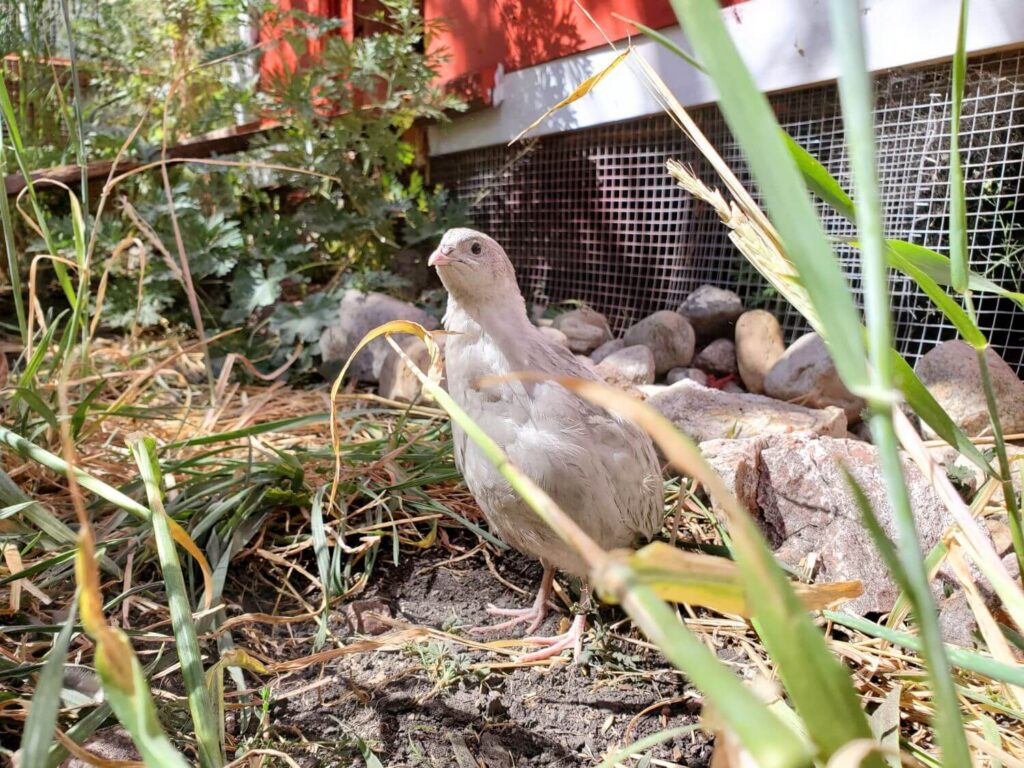
Their quiet nature also makes them ideal for backyard homesteaders with neighbours. They do make noise, but they blend in with natural bird sounds much better than chickens. The males make a unique crowing sound that can be quite loud at times but is still much quieter than a rooster’s.
Quail may even skirt local regulations against backyard flocks as they often don’t make the list of restricted birds. Of course, be sure to check your local rules before setting up your covey.
Quail are an excellent livestock option for beginners, for those without the space for larger animals, or for those looking to add another animal to their homestead.
Even if you’re not looking to raise a food source, quail are quirky, fun to watch and generally just great to have around.
QUAIL-RAISING BASICS
Quail need a few basic things to thrive – food, water, space, protection from predators, and the ability to express their natural habits.
Prior to getting the birds, you should have your basic setup completed and a plan for how you will provide these things for your quail.
HOUSING FOR QUAIL
An adequate shelter is one of the most important aspects of raising quail. You will want to ensure they have the space they need, appropriate protection from predators, and features to keep them happy and comfortable.
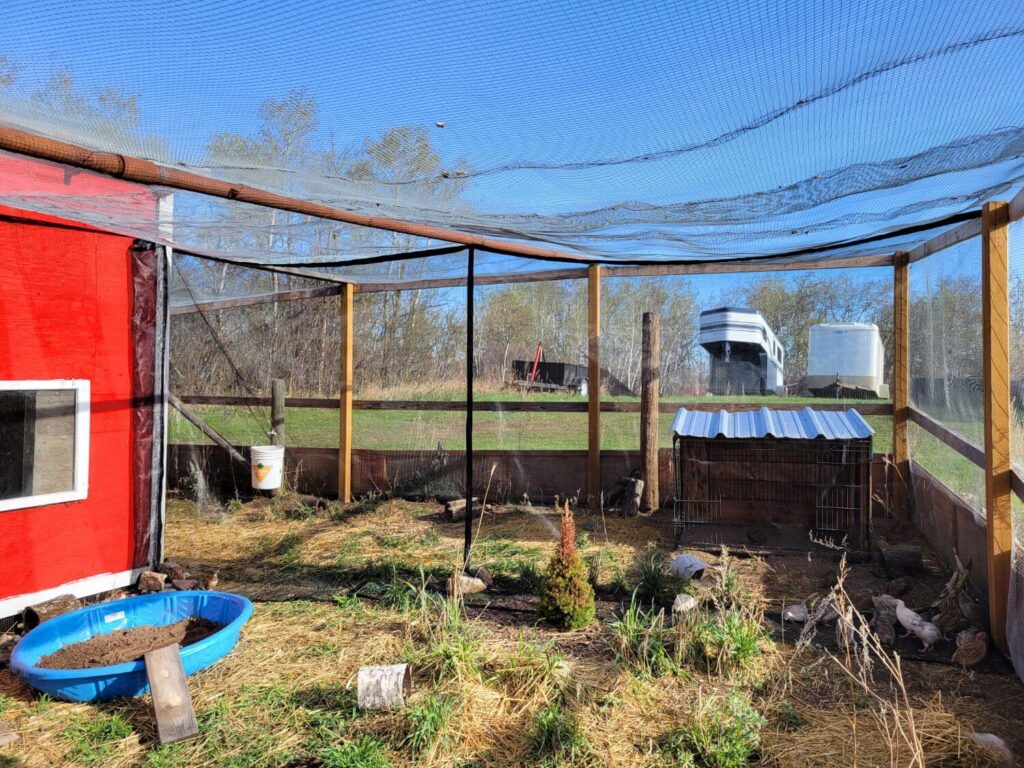
SPACE REQUIREMENTS FOR QUAIL
The general consensus seems to be that quail need only 1 square foot per bird. While they may be able to survive in those conditions, I would recommend providing at least 3 square feet per bird, or more.
This will allow them space to move around, peck, scratch, and do other birdy things which keep them happy.
SUITABLE HOUSING FOR QUAIL
Keep in mind that quail can fly, so their enclosure will need a top on it. Quail are not suitable for free ranging.
They tend to fly hard, fast, and straight up when they are startled. The top of the pen needs to either be low enough that they can’t fly up (about 30-45cm/12-18″) or high enough that they can fly upward without hitting their heads and hurting or killing themselves (about 2m/6ft).
Quail can be kept in either raised pens or on the ground.
Suitable enclosures for smaller spaces would be a rabbit hutch, a small chicken coop, or even a dog kennel if you only have a few birds.
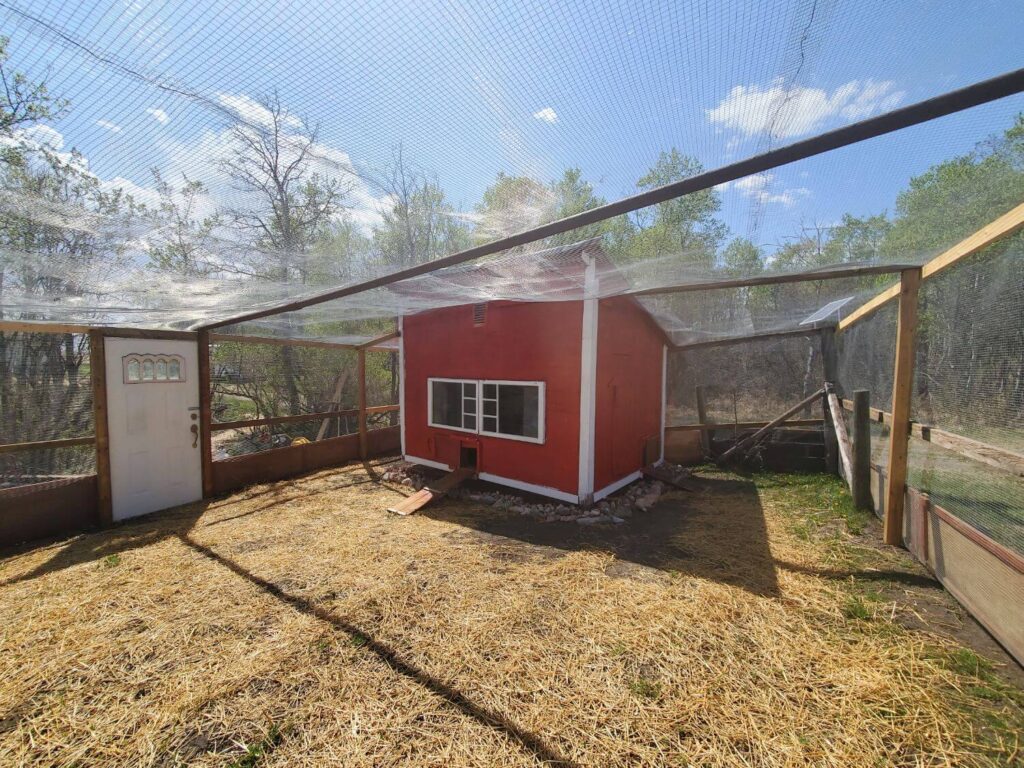
If you have more room or would like a larger flock, a full-sized flight pen attached to a shelter allows them to move around more freely.
Mobile pens or “quail tractors” will allow you to move your quail around to different areas of the yard or garden. These can be smaller, and thus easier to move, than a standard chicken tractor.
PREDATOR PROTECTION FOR QUAIL
Quail are small and have small predators, like weasels, so their housing will need to be free from any opening large enough to let them out or predators in.
Using wire mesh to fully enclose the pen will help keep the quail contained and safe from predators.
For permanent on-ground pens, it is also recommended to bury mesh around the perimeter of the pen to stop predators from burrowing in.
QUAIL HOUSING DÉCOR AND FEATURES
You’ll want to ensure you provide your quail a sandbox or dust bath area to groom themselves in.
They’ll also need bedding such as wood shavings or straw that they can scratch around and nest in.
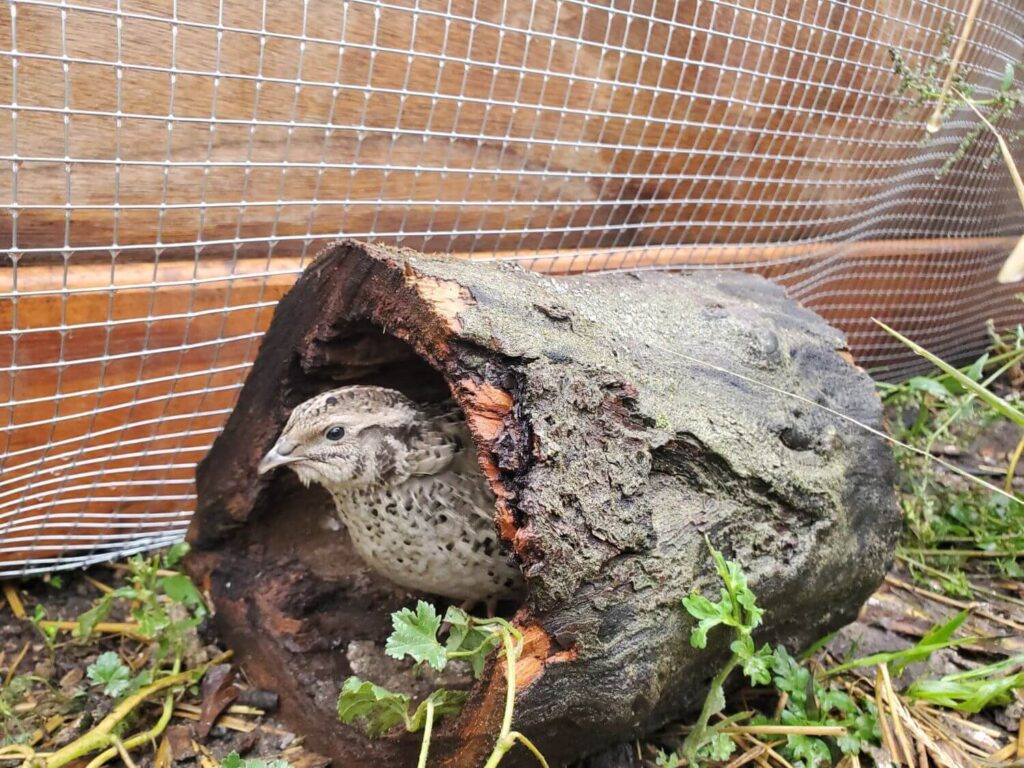
Quail appreciate natural elements like rocks, hollowed-out logs, and tree branches that allow them to peck around, perch, and hide in the nooks and crannies.
Some choose to add nesting boxes to their quail coop. However, quail tend to lay their eggs more randomly than chickens. If you are providing natural elements for them to hide in, they will likely choose to lay there, rather than in a nesting box.
PROTECTION FROM THE ELEMENTS
Quail are surprisingly hardy and handle various environments and cold climates well. As long as they have shelter where they can stay dry and protected from harsh winds, they will be fine.
You’ll want to ensure their enclosure provides protection from wind, rain and snow while still having adequate ventilation.
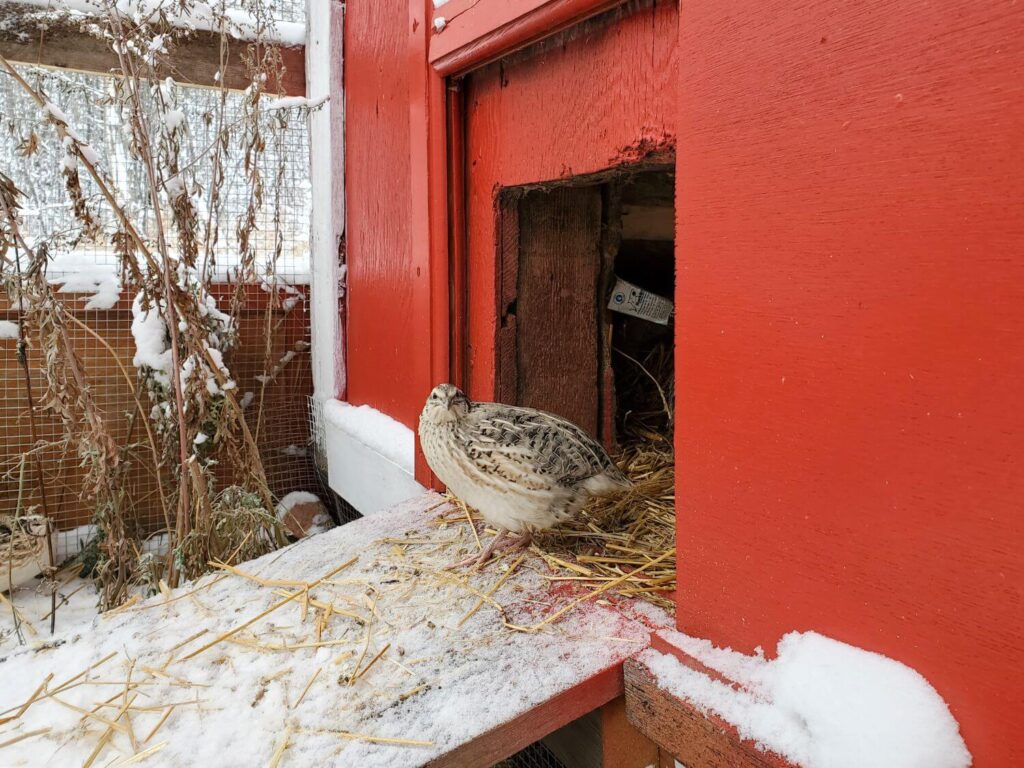
In extremely cold climates, deep bedding and a solid enclosure become more important. A heat source may be nice to have but isn’t always necessary.
Even in our Saskatchewan winters, we only turn on the heat lamp in their coop in temperatures around -30C and even then, I’m not sure they need it.
LIGHTING
Quail require about 14 hours of daylight in order to produce eggs.
You will require a light source in your housing if you plan to force egg production during times of the year with shorter daylight hours.
Providing artificial light can extend their laying, however forcing egg production will also stress female birds during their natural rest cycles and is likely to shorten their overall lifespan.
MALE TO FEMALE RATIO FOR QUAIL
One other important thing to think about when housing quail is to keep your male to female ratio in balance.
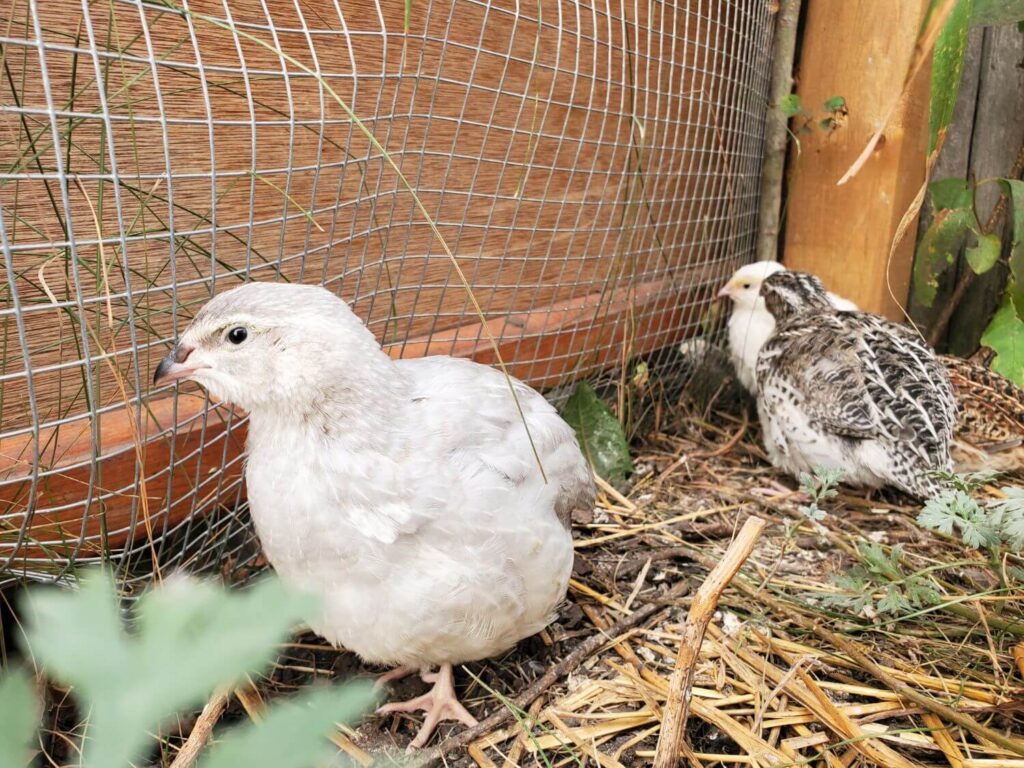
Having too many males will result in your females being over-bred, pecked to the point of feather loss and injury, and potentially being so stressed they will stop laying eggs.
If you are planning to hatch out eggs and need them fertilized, a ratio of 1 male to 4-6 females is generally recommended.
Of course, males are not required for females to lay eggs, so if you’re not planning to hatch and are looking only to have eggs for your own consumption, then the ratio of males to females can decrease or you could choose to have no males at all.
FOOD AND WATER FOR QUAIL
Like all animals, quail will need appropriate food and water available to them.
Game bird feed blends are available to use as your base food supply. This can be supplemented with additional grains, berries, insects, and plants.
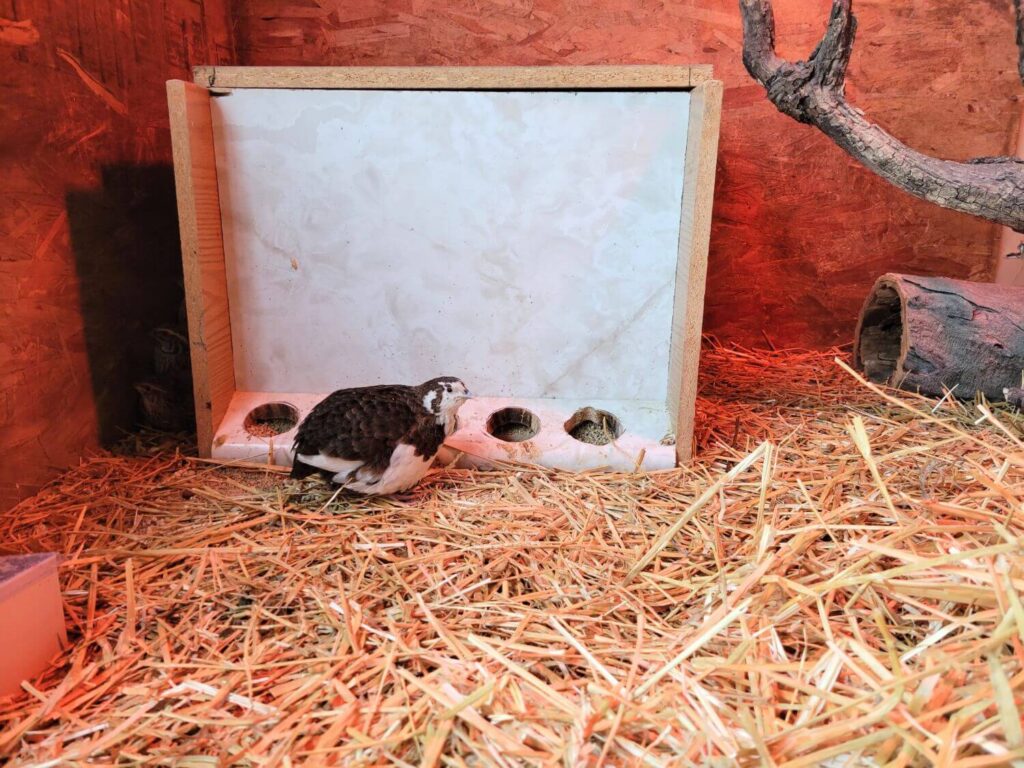
PROTEIN REQUIREMENTS FOR QUAIL
Quail require a diet higher in protein than chickens so avoid using chicken feed for your quail.
For chicks, a 30% protein diet is ideal. They can be switched to a 20-25% blend once they reach maturity at around 6 weeks.
Choose a crumble, as opposed to a pellet feed as this will be easier for the quail to eat and digest with their small size.
With our limited local options, we chose a 25% turkey and game bird starter blend from our local feed store. We feed this throughout brooding and adulthood with no problems.
SUPPLEMENTAL FEED FOR QUAIL
In addition to their base feed, your birds will appreciate special treats. Mealworms, hemp seeds, and grains like millet and rye are all good options to toss in their pen.
I also throw in garden scraps on occasion. Greens, such as lettuce and spinach, peas, broccoli, and cucumbers are all good options.
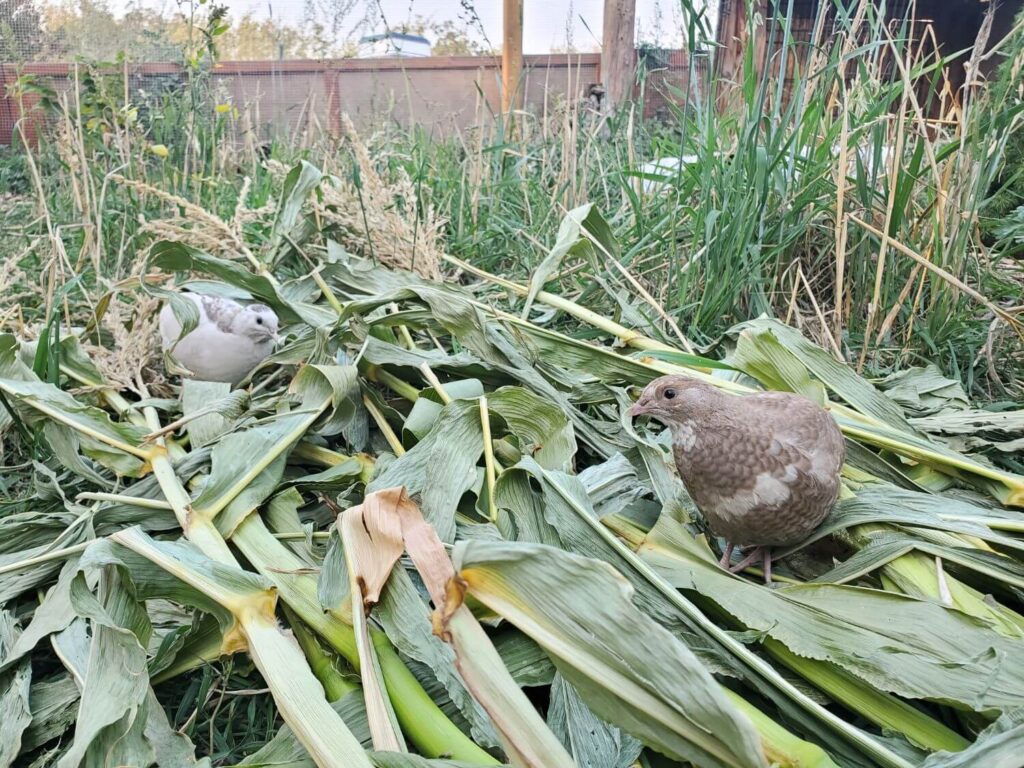
Not only is it fun to watch them peck around and forage, it’s also an excellent way for them to express their natural habits. Mealworms and hemp hearts also add a boost of protein.
If you are raising your quail in an on-ground pen, consider planting areas with natural food sources such as grains, berries, and greens for them to forage.
Plants with natural pesticide qualities, like wormwood, are also great options that help keep your birds healthy without additional medications or effort on your part.
You’ll also need to provide grit and a source of calcium, such as oyster shells, for egg production. Both of these should be available at your feed store.
FEEDER SETUPS FOR QUAIL
Quail will self-regulate their feeding, so I recommend using a self-built or store-bought feeder system that allows you to fill it with enough feed to last weeks or even months.
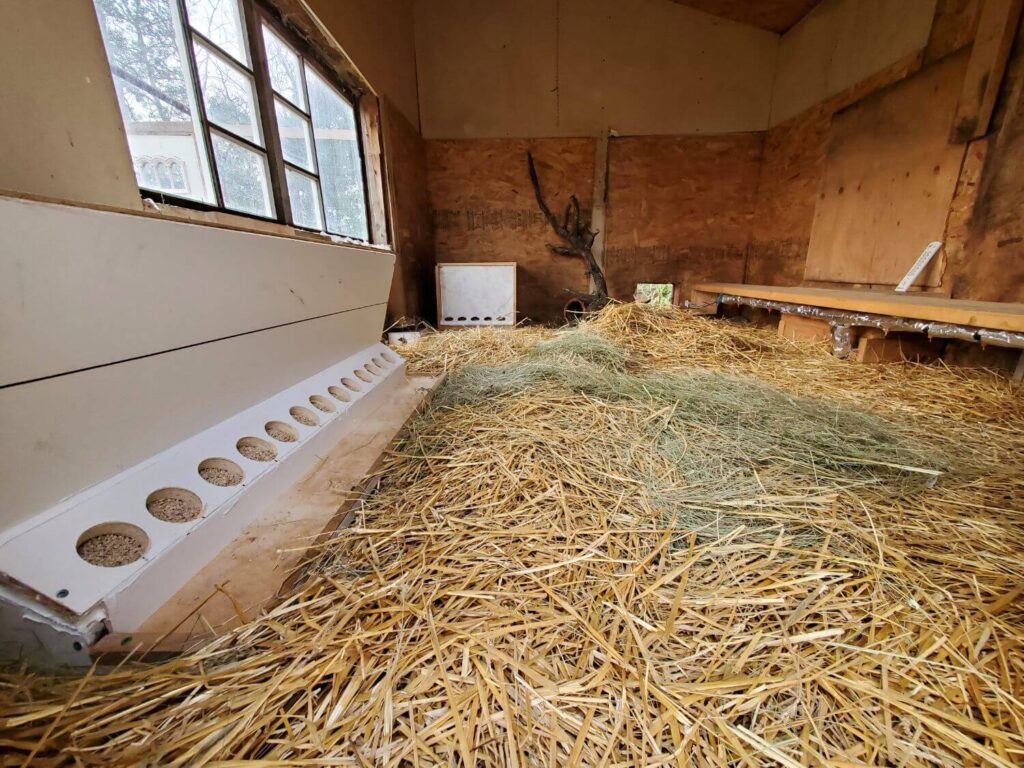
The feeder will need to be protected from the elements to prevent the feed from getting wet and moulding.
Keep in mind that quail like to scratch and make a big mess of their feed so keep the openings on the small side to limit the amount they can access.
WATER FOR QUAIL
Your quail will also need access to fresh water at all times.
For large pens, 5-gallon buckets with water nipples in the bottom work well. Place buckets in different areas so the birds always have easy access to water.
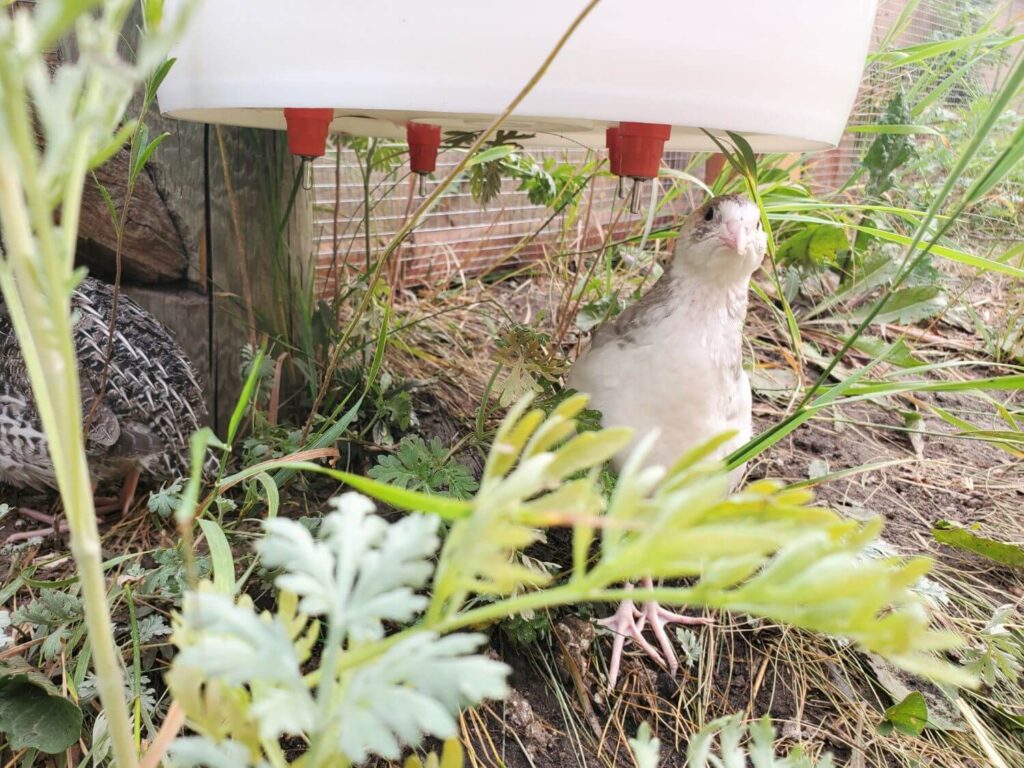
For smaller setups, a miniature version of the same system is ideal.
In cold climate winters, a heated waterer is handy to keep their water source from freezing.
SOURCING QUAIL
To get your flock started, quail can be purchased as hatching eggs, day-old chicks, or adult birds.
There are a few things to consider before deciding which to purchase.
HATCHING QUAIL EGGS
Hatching out your own quail eggs can be an exciting process. After weeks of waiting, it’s quite fun to see them emerge from their shells and start bopping around in the incubator.
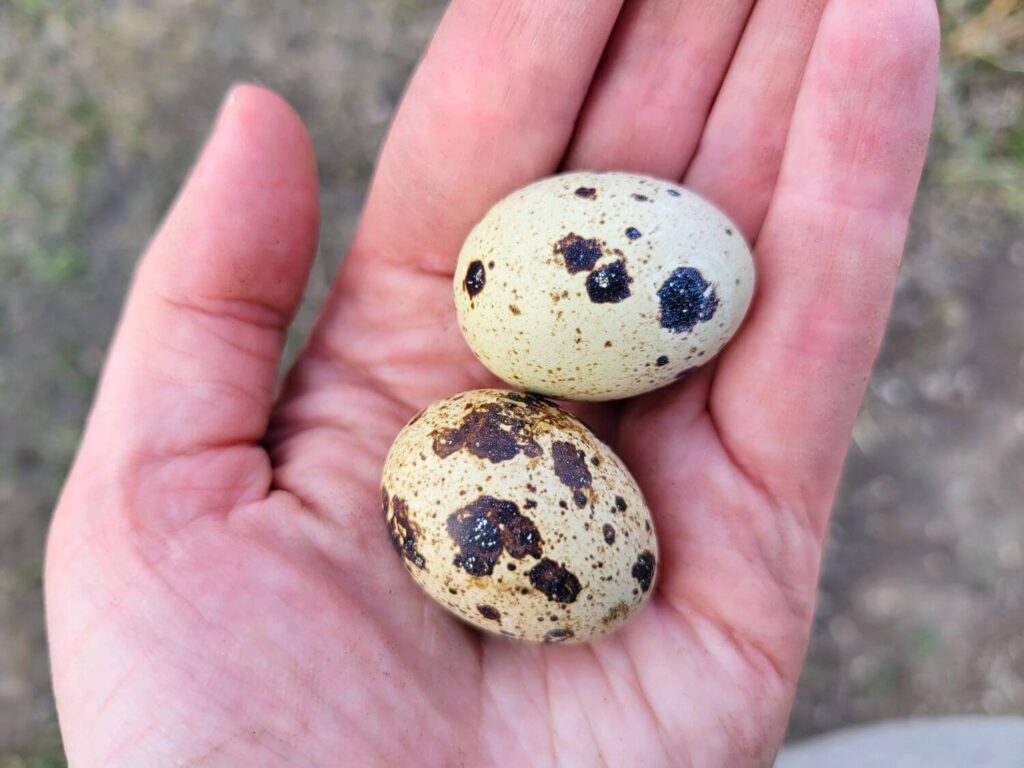
If going this route, you’ll need time, space, and the necessary equipment to incubate your eggs as well as brood the chicks until they mature.
READ MORE: A COMPLETE GUIDE TO INCUBATING AND HATCHING QUAIL EGGS
READ MORE: WHERE TO FIND FERTILE QUAIL EGGS IN CANADA
READ MORE: A COMPLETE GUIDE TO BROODING QUAIL CHICKS
DAY-OLD CHICKS
Depending on your location and local availability, you may also have the option of obtaining day-old quail chicks to raise.
In this case, you won’t require the additional equipment needed for the incubation process, but you will still need some special equipment for brooding the chicks.
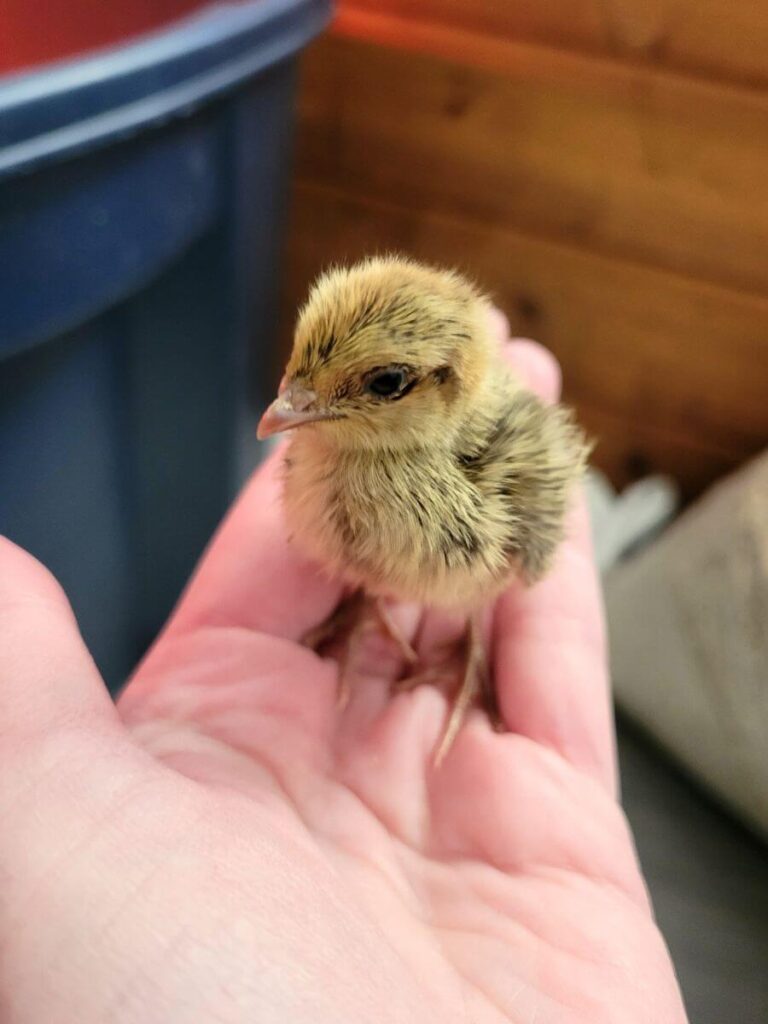
New quail chicks are quite fragile and will need to be kept warm and safe for a number of weeks before they can be moved to a larger or outdoor pen.
ADULT QUAIL
If you’d prefer to skip the incubation and brooding steps, buying adult birds may be a better option for you.
Adult quail are fully mature and hardy enough to be moved directly into their living quarters, without the need for brooders or special equipment.
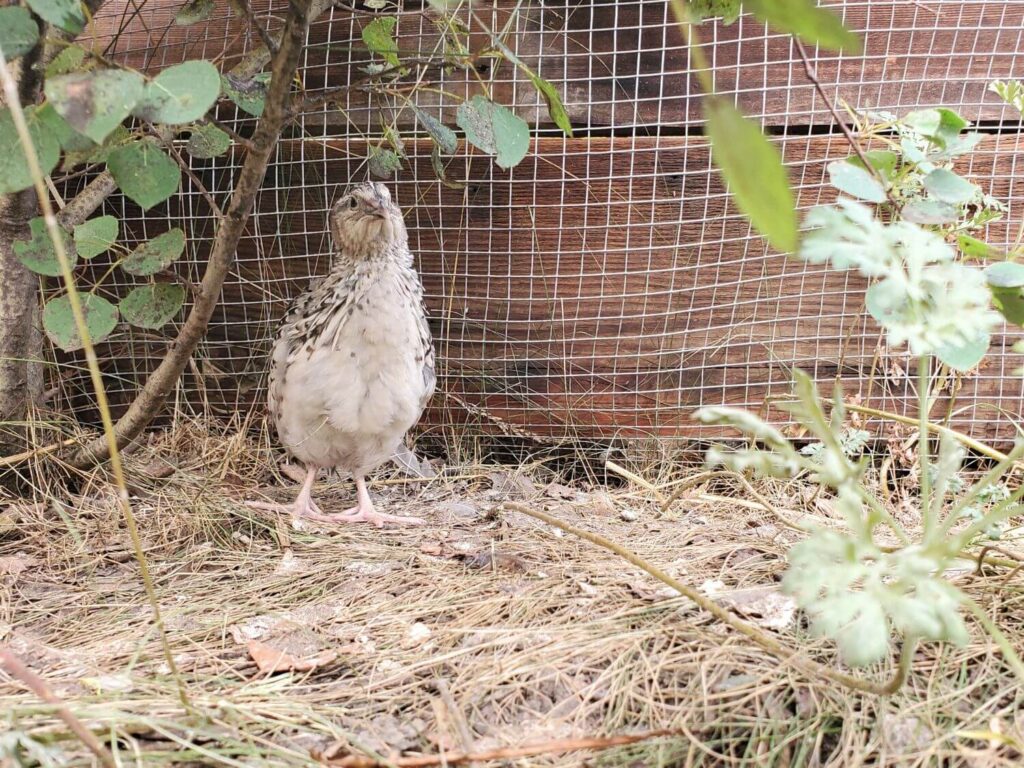
Keep in mind that moving to a new environment may be stressful for the birds and there is the potential to introduce new diseases or pests if you are adding adult birds to an existing flock.
It will also be difficult to tell the age of the birds so you will have to trust the person you are sourcing from that they are at prime age and not nearing the end of their life span.
QUAIL LIFE STAGES
INCUBATING AND HATCHING QUAIL EGGS
If you’re looking to get the full experience of raising quail, I would highly recommend incubating and hatching your own chicks.
We’ve gone through the process a few times now and I still find it exciting when they start to pip and emerge from the shells.
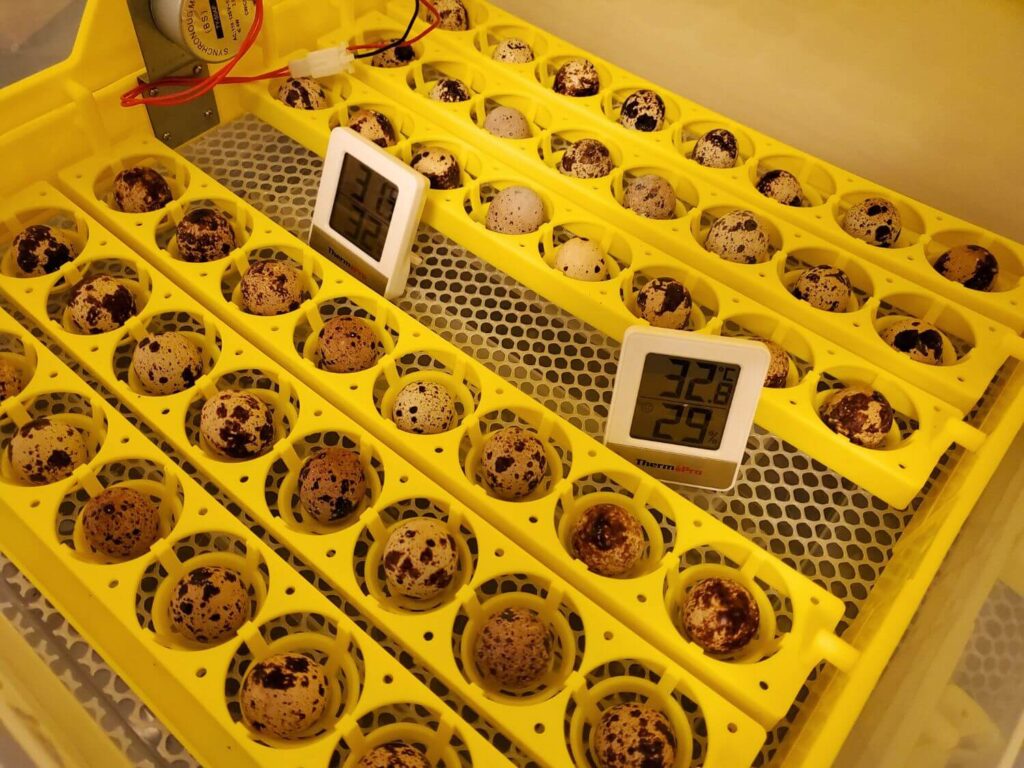
All you really need are fertilized eggs, an incubator, and an extra hygrometer or two.
Eggs can be sourced locally (if available in your area) from local feed stores or other home-based quail raisers. If you don’t have a local source, fertilized eggs can be ordered online and shipped.
Incubators and hygrometers can be purchased from your local farm store or online. Just be sure that the incubator has egg rails that can accommodate quail-sized eggs.
The basic incubation process for quail eggs runs over approximately 18 days.
Days 1-14 involve keeping the incubator at a temp of 99.5F/37.5C with about 50% humidity. Eggs will need to be turned during this phase, either a few times a day manually or by using the auto-turn option on your incubator if it has one.
Day 15 is known as the lockdown date, where the eggs rails are removed and the eggs are laid flat on the floor of the incubator. You’ll want to increase the humidity to about 65-70% at this point and stop turning the eggs.
Then, you wait.
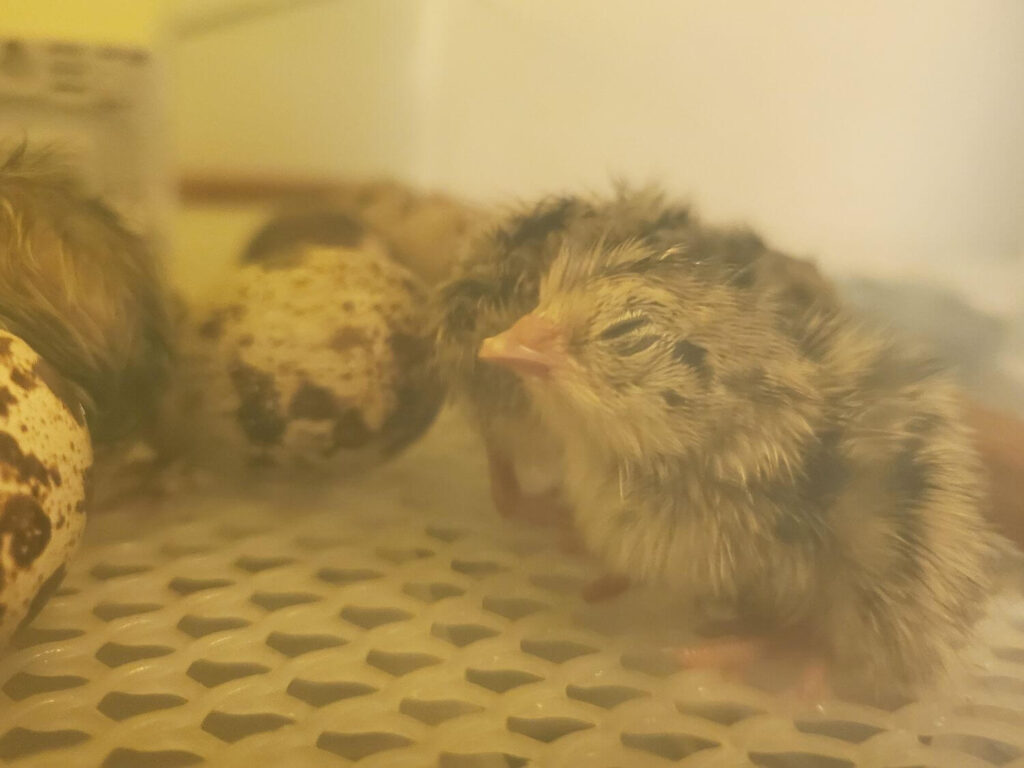
Day 18 (give or take a day or two) you should see some action. Hatching begins with the “pip and zip” of the egg, where the chick uses their beak to break the shell and “zip” open the large end of the egg before pushing their way out.
Once out, they will start bopping around in the incubator. You’ll want to leave them in there for 12-24 hours or until they are dried off and fluffed up. At that point, you will move them to your brooder.
READ MORE: A COMPLETE GUIDE TO INCUBATING AND HATCHING QUAIL EGGS
BROODING QUAIL CHICKS
Whether you’ve hatched or own quail chicks or sourced day-olds from somewhere, you’ll need a safe, warm place to brood them until they are grown enough to survive in their adult living quarters.
The brooding period lasts for about 4-6 weeks, depending on the type of housing you’ll be moving them to as adults.
Younger chicks will do fine in a warmer, well-sheltered living space.
You’ll want to keep them in the brooders a bit longer if they will be moved out to on-ground pens with less protection from the elements during colder times of the year.
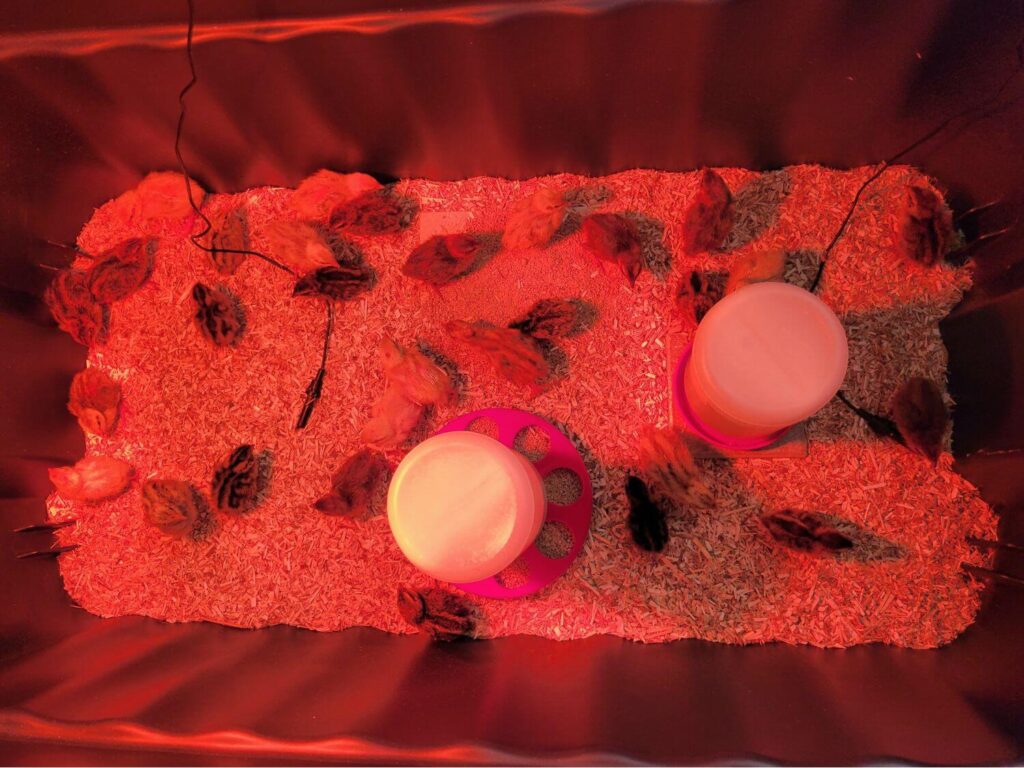
Brooders can be DIY-ed from any number of materials from scraps of wood to plastic totes.
Regardless of what you use, the brooder will need to be draft-free, large enough to accommodate the number of chicks you have, and provide a safe, warm space.
As they grow, the chicks will require about a half a square foot per chick in the brooders, with room for food, water, and warmer/cooler areas close to and away from a heat source so they can warm up/cool down as needed.
Keep in mind that the chicks will get their wing feathers during the brooding phase and will be able to fly once those develop. Having a cover of some sort on the brooder is crucial.
Throughout brooding, the chicks will need a fresh supply of bedding, food, and fresh water.
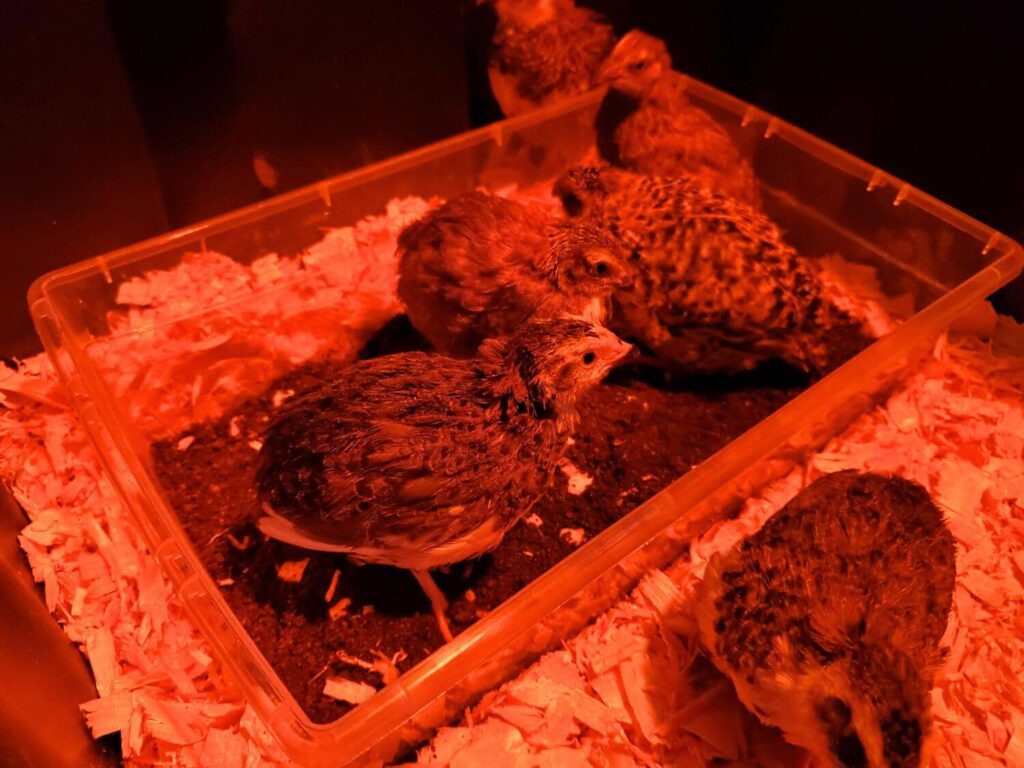
Hemp or pine shavings work well for bedding and can be sourced from your local farm store.
Look for a crumble food (as opposed to pellets) that will be small enough for the chicks to eat. You may even need to grind the crumble into smaller pieces for the first few days.
Quail chick waterers are recommended as the very young chicks could drown in anything bigger. An alternative is to place a shallow dish with rocks or marbles in it to protect the chicks from drowning.
A heat source will need to be provided 24/7 while brooding.
You’ll want to start with the temp around 95F/35C for the first week, dropping the temp by about 5 degrees per week until you reach room temperature or about 70F/20C.
Once they are fully feathered and able to handle temperatures without an additional heat source, they are ready to move to their adult home.
At this point, the quail can be feather or vent sexed to ensure a proper male-to-female ratio. You may wish to mark the birds with leg bands to identify age and/or sex.
READ MORE: A COMPLETE GUIDE TO BROODING QUAIL CHICKS
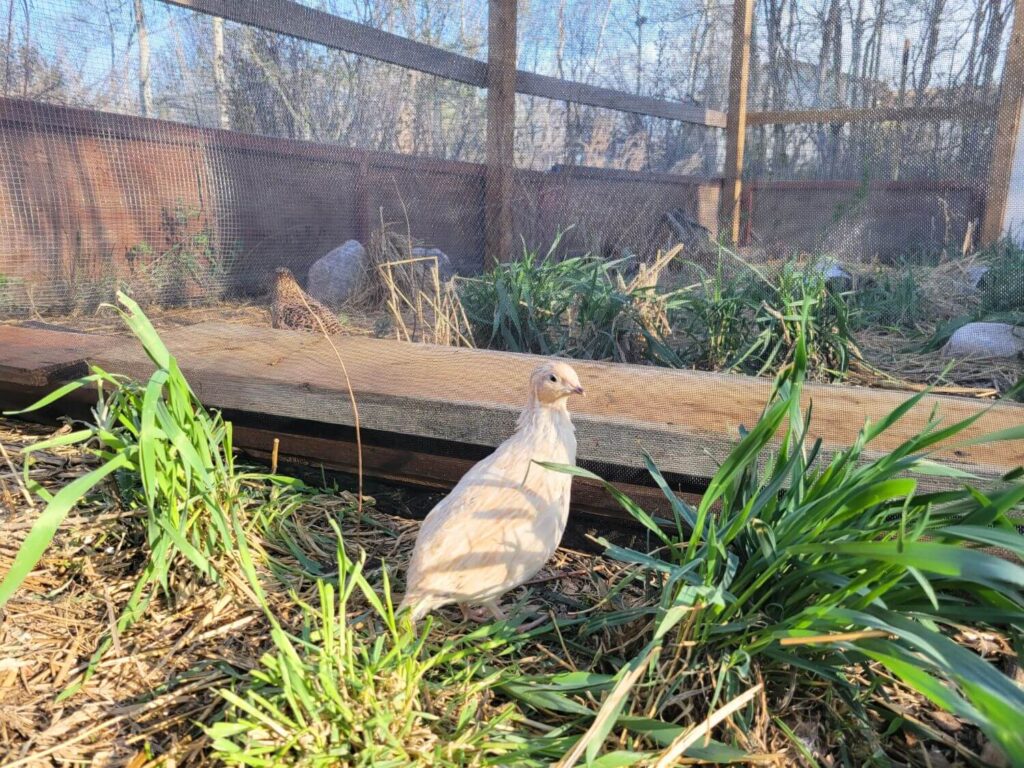
ADULT QUAIL
Regardless of how you source or raise your quail, there are some important timelines and milestones that you’ll want to keep in mind for your adult quail:
4 weeks old – approximate age that they become fully feathered. At this point, they can be feather or vent sexed and can usually be moved out to adult housing, depending on environment.
6 weeks old – approximate age that the male to female ratio should be established to avoid over-breeding at maturity.
8 weeks old – approximate age that females will start to lay eggs. This can vary by as much as two weeks younger or older.
8-10 weeks old – ideal age for butchering for meat. This can be done as young as 6 weeks or as old at 14 weeks, depending on your preferences and situation.
2 years – egg production in females will begin to slow down. Quail may begin to near the end of their life span depending on health, environment, and if egg production was forced.
4 years – approximate life span for quail in captivity. This will depend on health, environment, and rest periods provided to the birds.
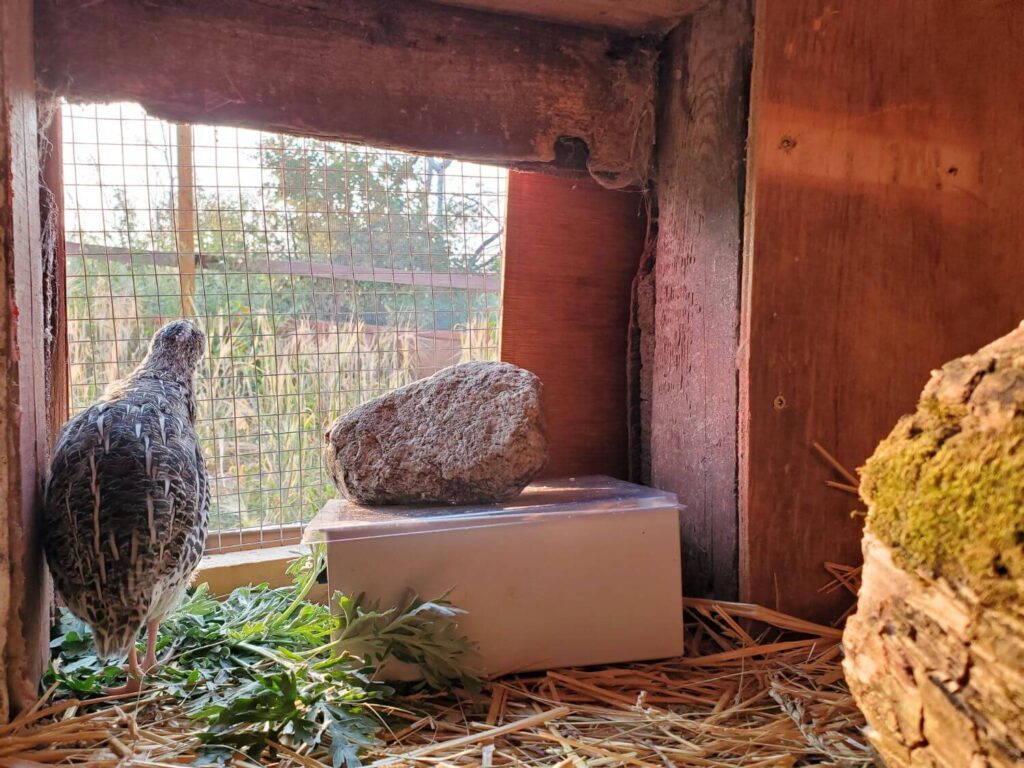
CONS TO RAISING QUAIL
Despite all the reasons there are to raise quail, there are a few downsides you should be aware of.
QUAIL ARE SMALL
Although their small size makes quail ideal for some, it can also be a con in some ways.
The volume of meat and eggs they produce will be smaller than larger birds. Quail are great if you’re looking to supplement your meat and egg supply but would have to be raised on a large scale if you’re looking for a primary food source.
Their small size also makes them more vulnerable to predators and they require a more secure enclosure than some other animals.
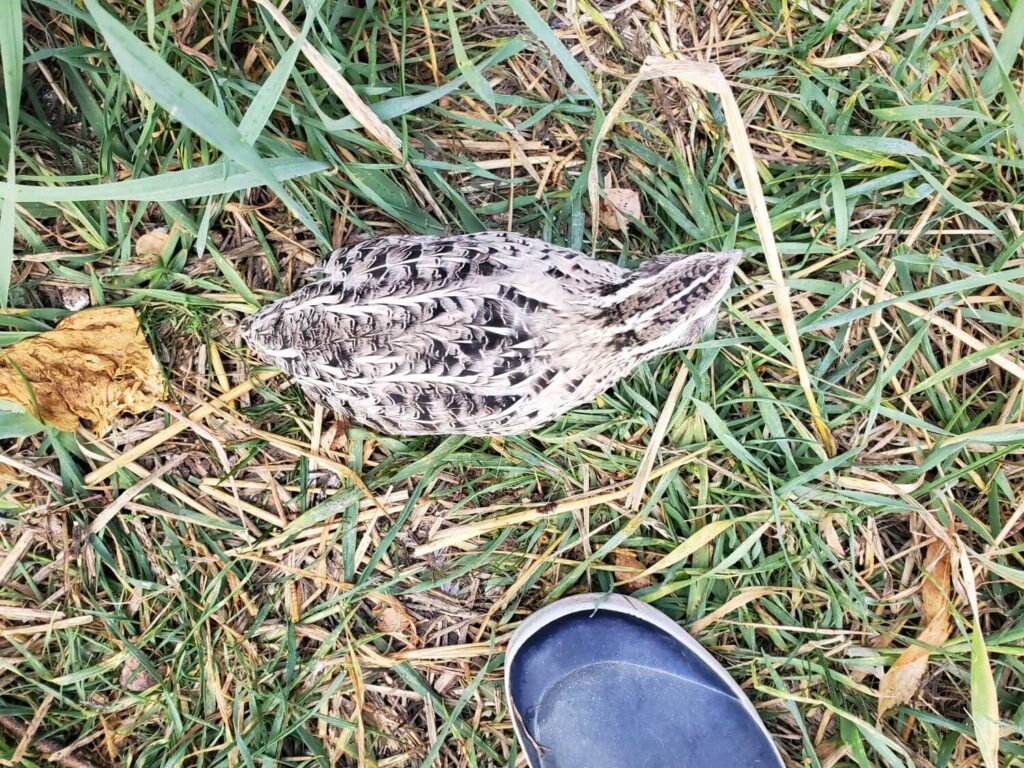
QUAIL ARE MESSY
Quail poop…a lot.
This, too, can be an excellent resource for compost but will require regular cleaning of their coop and enclosure areas and a place to store the material while it breaks down.
QUAIL WILL LAY THEIR EGGS ANYWHERE
Quail are ground-dwelling birds and will lay their eggs almost anywhere with adequate coverage.
This means that egg collection can become a daily easter egg hunt, which requires a little more time and patience than simply grabbing eggs out of nesting boxes.
This is especially true if your covey has a large coop or an aviary with natural ground cover.
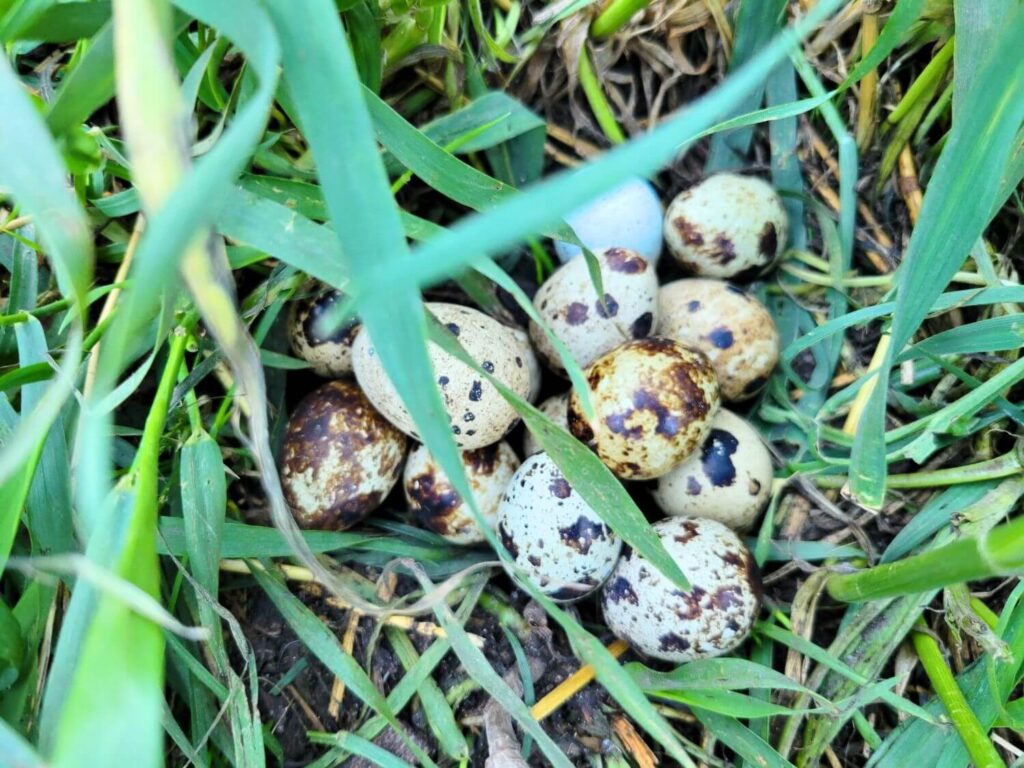
We have found our quail tend to pick a few favourite spots to lay, and they’ll rotate through these. Occasionally, they’ll start laying in entirely new places.
Our strategy is to check the usual places and then do a quick sweep of the rest of the coop and outdoor enclosure.
I largely find the daily egg hunt to be an enjoyable time to spend with the birds. However, it can be frustrating on days when I’m in a rush or if the weather is bad.
QUAIL CAN’T FREE-RANGE
As mentioned earlier, quail can and will fly. They cannot free-range and will need an enclosure with a roof to keep them contained.
QUAIL DON’T OFTEN GO BROODY
If you’re looking to continually renew your quail supply, expect to do your own incubation and brooding. Quail will not often go broody and raise their young on their own.
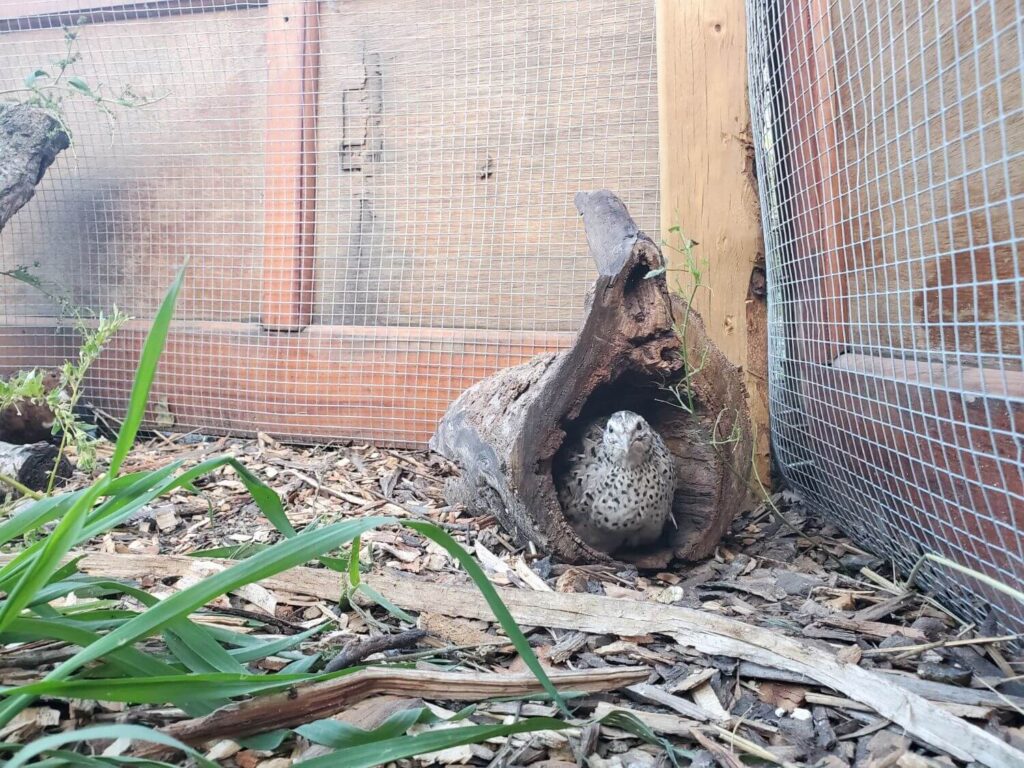
Raising quail comes with many benefits – from delicious eggs to tasty meat to endless hours of entertainment from these quirky birds.
If you’re looking to add birds to your homestead, your backyard, or even your patio, you might just want to give quail a try!
